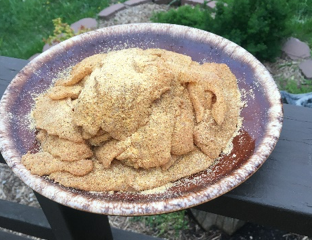A part of life
In the spring of 1989, my mother and father met at my future grandpa’s fish fry. In the early summer of 1992, my mother was having cravings for fried crappie while carrying me in the hospital. My grandpa went and caught a limit, then fried them up for her – in the parking lot.
Growing up, fried fish was served at my high school graduation, every major event, a fair share of holidays, and just sometimes to celebrate the fish biting. Long story short, cooking and eating fish is, and always has been, a large part of my life.
Tyler Mahoney asked me to share a little “how-to” when it comes to me frying fish, so here I go. Before you start frying fish, you must understand the full scope of what you are doing. A fish fry is not just a meal, but an event. Regardless if it is just two pieces of crappie for supper, or four gallons of flathead for a mid-summer southwest Missouri get together, it’s always a big time when you are cooking fish.
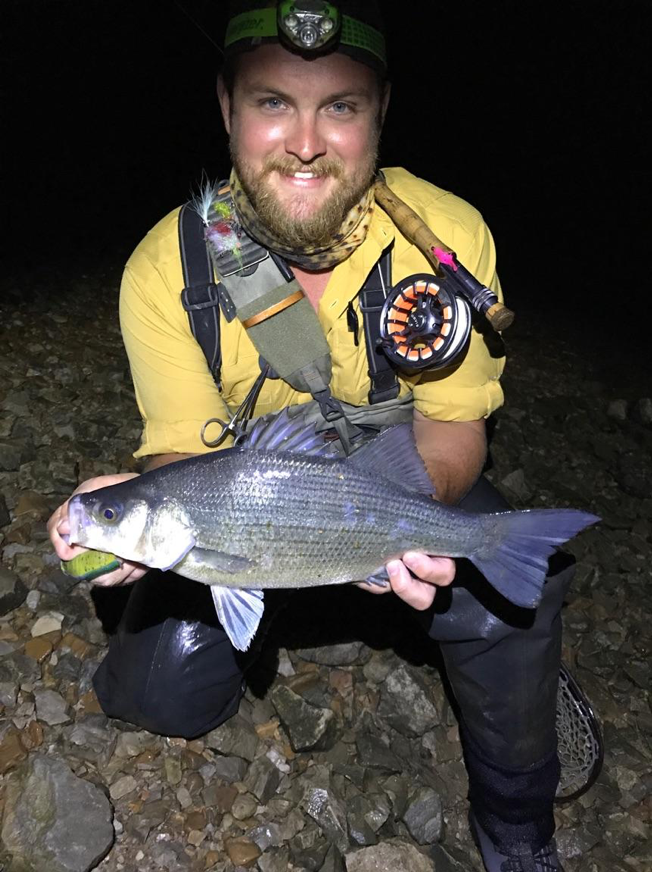
Fish preparation
Ingredients are key to a right proper fish fry. The most important part is, you guessed it, the fish. Every region of the country has its own personal favorite. That being said, each time of year yields its own unique bounty. Eating hog sucker in July just feels weird, just like eating catfish in January might be weird to some folks. Regardless, I’ve yet to see someone turn it down.
The key to good fish no matter what time of the year is being well cleaned. I can’t count how many times I’ve heard someone say they don’t like fish because it tastes “fishy”. Every time those words roll out of a person’s mouth, I stop them and ask, “Do you not like a steak because it tastes too beefy?”
Generally, they stumble over their words for a bit before I attempt to set them straight.
If a piece of fish tastes GAMEY, generally it wasn’t cleaned properly. For instance, take white bass. Personally, they are my favorite fish to catch and eat. Most of the time when I say that, people automatically bring up their naturally gamey flavor for why they don’t consume the tenacious fighters. The issue is the pink meat. Most of the time anglers aren’t aware of what “pink meat” is, or why to cut it out. After a quick tutorial they get the picture.
Pink meat is the fat on the skin side of the fillet that if not removed, can give the fish a strong, gamey flavor. That’s the flavor that can cause people to turn up their noses.
Myself? I like the taste. Call me crazy, but a fresh white bass fillet is about the best thing I can throw down the hatch.
Bleeding a big catfish, cutting out discolored meat, and removing pink meat are all things you can do to reduce the “gamey” flavor. Take care of your meat and it will take care of you.
Cooking tools
You need the right equipment to properly fry fish. For starters, you need a pot. Everyone has their own preferences on size and material. I use varying sizes of cast iron depending on the size of the crowd I am cooking for. I used stainless steel before, too. Both are great options. Simply find a well-built pot that can hold the heat and stand up to the fire.
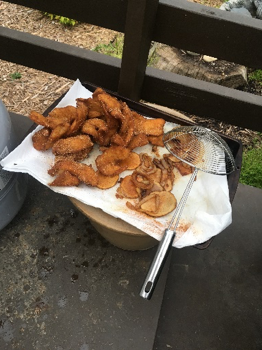
Speaking of fire… A propane burner isn’t that expensive and it’s worth every penny. Personally, I have a Bayou Classic jet burner, but there are multiple companies that make good burners. Auxiliary items such as fish scoopers, thermometers, and pans are all necessities.
The batter
Next comes the breading on the fish. This is where some jimmies might get rustled. Wet battering fish is a lot like desecrating the American flag or listening to Luke Bryan. If you do it, don’t do it at my fish fry. I know, I know. It’s how some people have done it their whole life, yada yada yada.
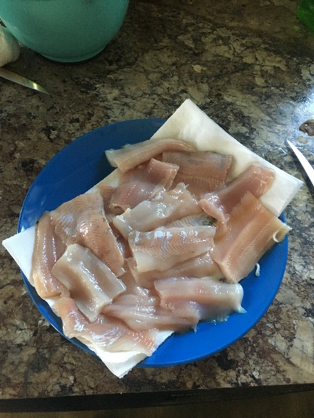
For all intents and purposes, in this article we are not in Minnesota, it isn’t Friday during lent, and we roll our fish in what god intended, cornmeal.
Besides that point, I don’t have any strong feelings towards the breading. Personally, I like a spicy/Cajun flavor to my fish. My buddy cuts his with jiffy corn muffin mix for a delightfully sweet morsel. My old man? Cornmeal, salt, pepper. He says he likes to taste the fish. My personal recipe for a spicy breading is as follows.
Dave’s Seasoning
- Seasoned Salt
- Salt
- Pepper
- Garlic Powder
- Onion Powder
- Chili Powder
- Cayenne Pepper
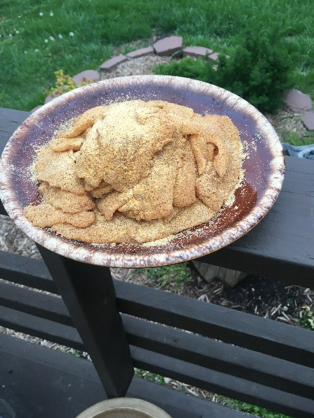
Mix those in equal proportions. Then add to the cornmeal. Blend to the taste/spice level you want. This is best used as a base. Find things you like, then add and subtract.
Cooking
With the fish and the breading lined out, it’s time for the oil. The oil, and its temperature, are two of the most crucial parts of making good fish. The type of oil used depends on your fish quality. I like peanut oil. It has one of the higher smoke points of all frying oils and doesn’t impart much of a distracting flavor.
Yes, it is more expensive, but it can be re-used over and over again. Generally, I get a year out of a 5-gal jug of peanut oil. If you are going to have a lot of big fries, best to use what the pros do. Go peanut or go home.
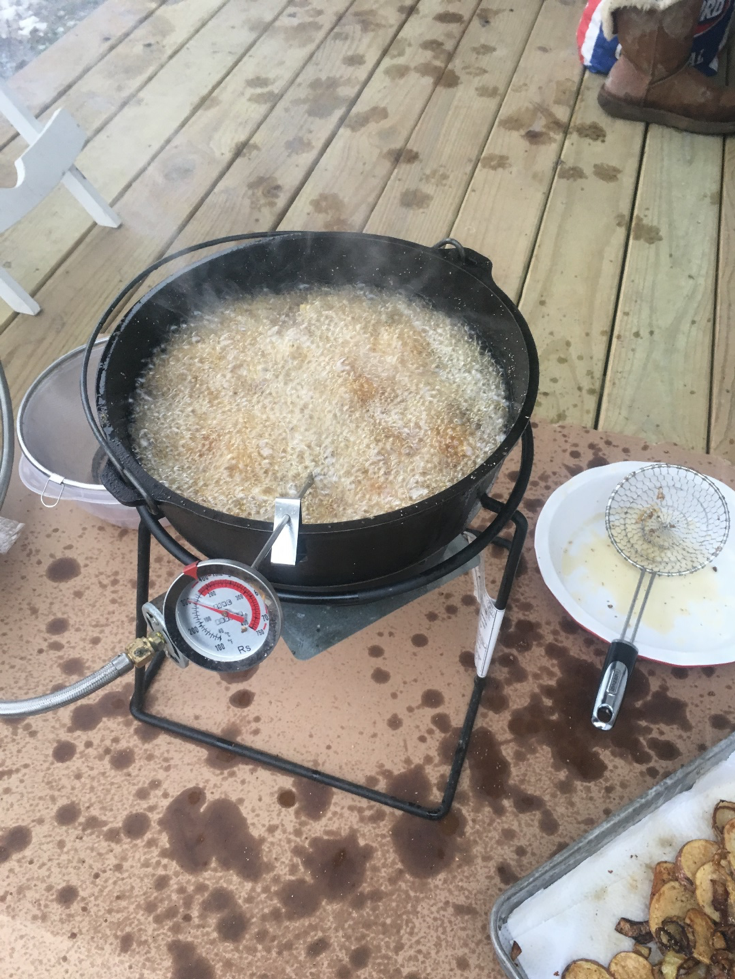
If you are more of an occasional fish fryer, just use whatever is cheap. Just watch your temp. That brings me to my next point: the heat in which to fry. I like my fish crispy and honestly I’ve yet to meet a man that likes a greasy, soggy, piece of fish. The key to this is consistent oil temperature. I like mine at 375. This makes a crispy crust without allowing the grease to penetrate the fillet.
If your oil gets to the point of smoking, turn off the heat. That means the oil is burning and is nearing the point of combustion. A grease fire is not a fun fire, at least not until after the fish is cooked (just kidding). Take care of your oil and it will take care of you. More on that shortly.
The sides
Sides at a fish fry are pretty darn simple. Potatoes, often referred to as “Taters” or “Potatas”, Onions, and if you really want to get fancy, “whomp biscuits” for dessert. The purpose of these items is two-fold. They are something else to eat besides fish and they actively clean the oil as you cook. The potatoes grab some of the excess corn meal that is floating around the pot when they are cooking. They also cool down your oil.
Be careful though, they can still easily boil over a pot, which can lead to a grease fire. Once again, a grease fire is not a desired part of your fish fry.
Once the fish, taters, and onions are all out of the pool and everyone thoroughly hates themselves for the deadly sin of gluttony, it is time for the whomp biscuits.
What is a whomp biscuit you ask?
Well, they are the cheapest, bottom of the barrel, canned biscuit you can find at the store. If it is over a dollar a can, it’s too nice. They get their name by “whomping” the can on the palm of your hand to make it open up after taking the wrapper off.
Like usual, they are pretty simple to cook. Shut off the heat and drop them into the still piping hot oil. Once the bottoms turn crispy brown flip them over. After both sides are cooked, drop into a paper bag filled with cinnamon sugar and shake it up. Drop out on a pan and serve with strawberry freezer jam. You may hate yourself more after eating it, but it’s totally worth it.
Moral of the story
Well, I think that pretty much sums up my “how-to” fry fish. Well-cleaned fish in cornmeal-based batter, cooked in 375-degree peanut oil until it floats, paired with taters, onions, and whomp biscuits.
It will be best served in a barn or on a gravel bar with a cold beverage in hand. It is a cultural staple in Southwest MO and will forever be a part of my life. You’re never in finer company than you are at a fish fry.

